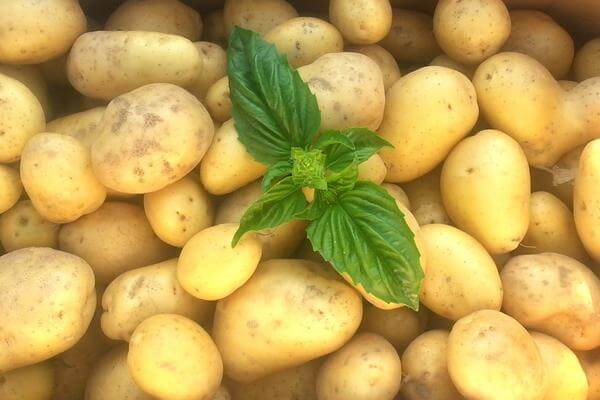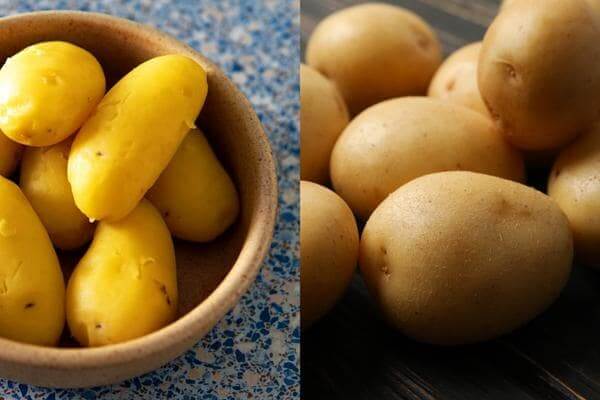If you have ever baked potato and wondered if it cooks faster with or without its skin, I’m here to tell you that the answer is both yes and no.
On the one hand, yes, potatoes do cook faster when they are peeled. But on the other hand, no—they don’t necessarily cook any more quickly than they would if they were left in their natural state.
It all depends on how you want your potato to cook, whether you are roasting, baking, pressure cooking, or microwaving it. So let’s get into it!
Removing the Potato Skin Can Speed up The Cooking Time

The skin of a potato serves as a barrier to heat, meaning that it takes longer to cook thoroughly. If you want to speed up the potato cooking process, simply remove the skin after your potatoes are done; it will peel off easily and won’t affect the taste at all.
Don’t worry about losing any nutrients by removing a thin layer of skin. It’s not like you are peeling off an apple or something!
A potato’s insides are where all its nutritional value lies anyway. For instance, when you eat broccoli florets without their stalks (another ‘skin’), you only eat about 14% of your daily recommended fiber intake versus if they were both consumed together in one meal.
In other words: don’t stress out over whether or not there will be any negative health effects from taking off some potato skins!
Plus, there are plenty more benefits to eating potatoes with their skins left on—fewer calories and more vitamins C and B6. Just make sure not to burn them!
Removing the Potato Skin Can Reduce Inflammation.
Removing the skin from your potatoes will allow them to cook faster, but you will lose out on some of their health benefits. Potatoes are rich in antioxidants and fiber, which help reduce inflammation and improve digestion. Their skins contain plenty of both, so leaving them on will give you a nice serving of both nutrients.
In addition to antioxidants and fiber, potatoes’ skins also contain vitamin C—a crucial nutrient for your immune system’s health.
Leaving Potato Skin on Can Add Fiber and Vitamins to Your Diet.
Whether you choose to keep the skin on or not, there are some benefits to leaving it that may make your decision easier. The skin of potatoes is one of the richest sources of fiber, vitamin C and B6, potassium, and magnesium.
Potatoes are also a great source of protein. They have about four grams per serving (roughly one large potato). In addition to being high in fiber, they provide potassium, which helps control blood pressure, and magnesium, which supports bone health.
Does It Depend on How You Want Your Potato to Cook?
Cooking time depends on how you want your potato to cook, whether you are roasting, baking, pressure cooking, or microwaving it. The internal temperature of a potato can vary depending on how much water is left in the skin after washing and drying. It also varies according to the size of the potato.
When it comes to serving time and temperatures for roasting and baking potatoes, they are done when they are soft throughout (check by inserting a fork). When boiling or steaming potatoes, their skins should not be pierced with a knife as this will allow them to burst open during cooking, causing them to lose some of their precious moisture.
However, if you are making mashed potatoes, then piercing them with a fork allows steam from within the cut surface to escape through small holes, which helps prevent lumps from forming in your mash!
Conclusion
We hope you have learned more about potatoes and their cooking methods. As you can see, each method has pros and cons, so it’s up to you which way works best for your needs.






